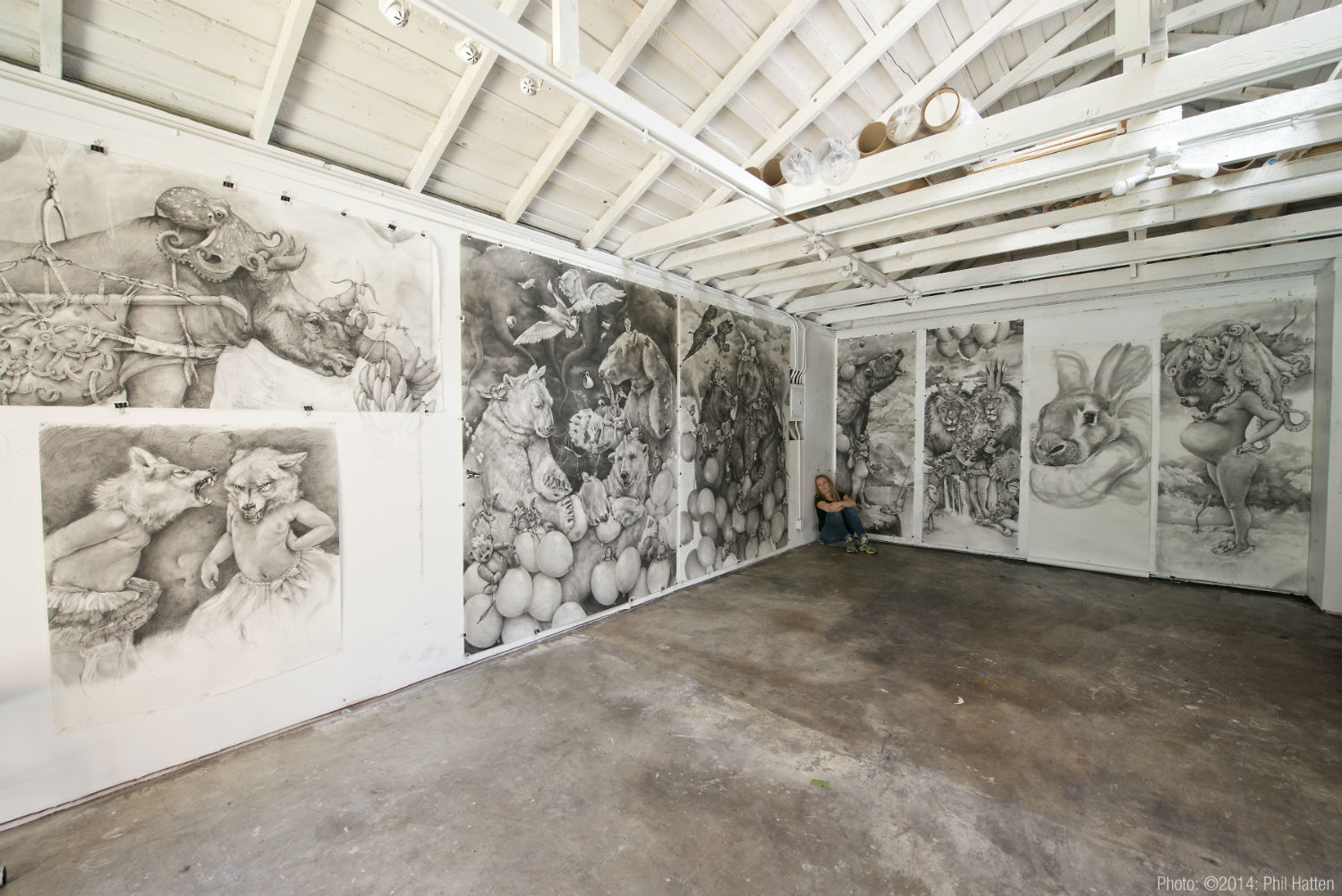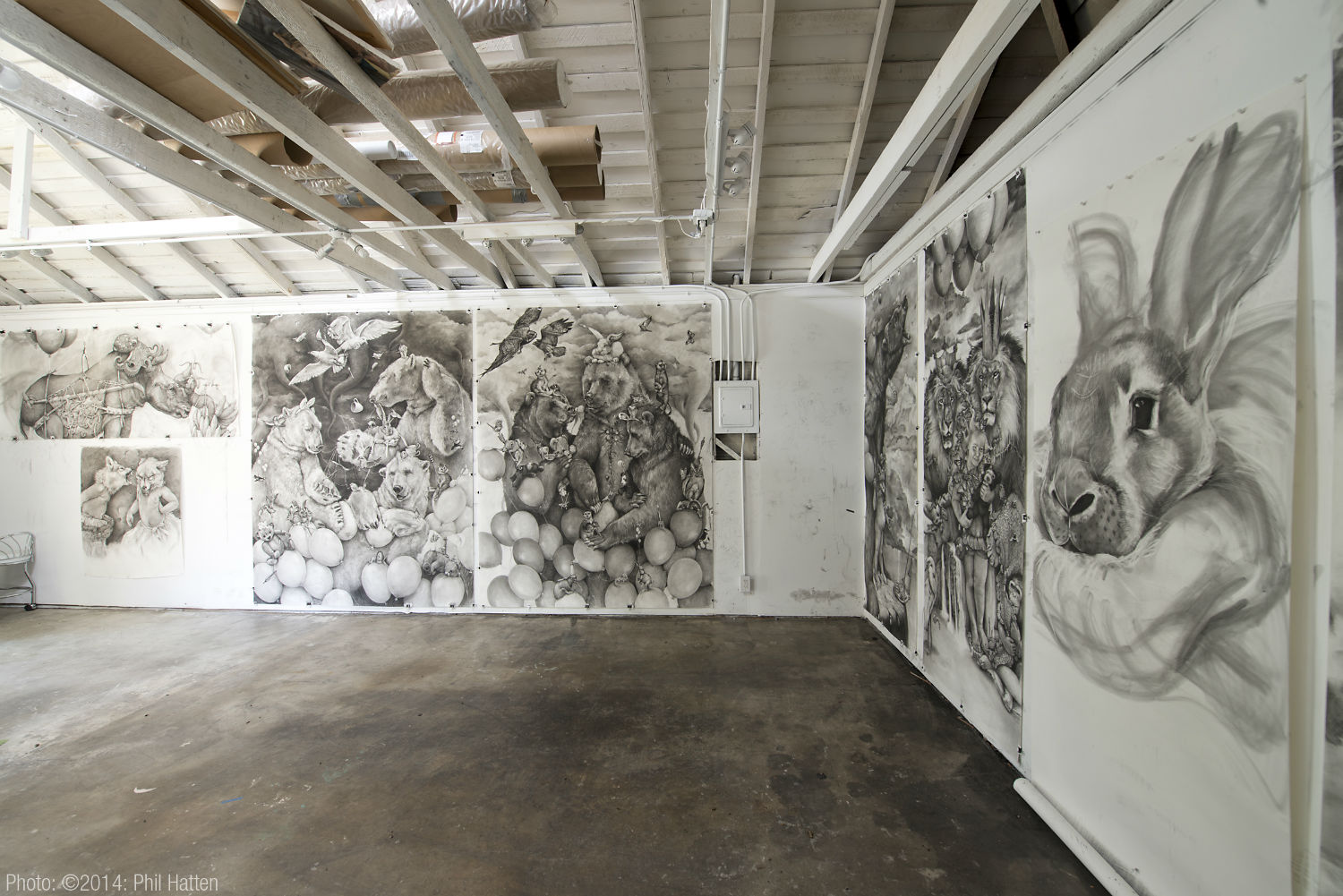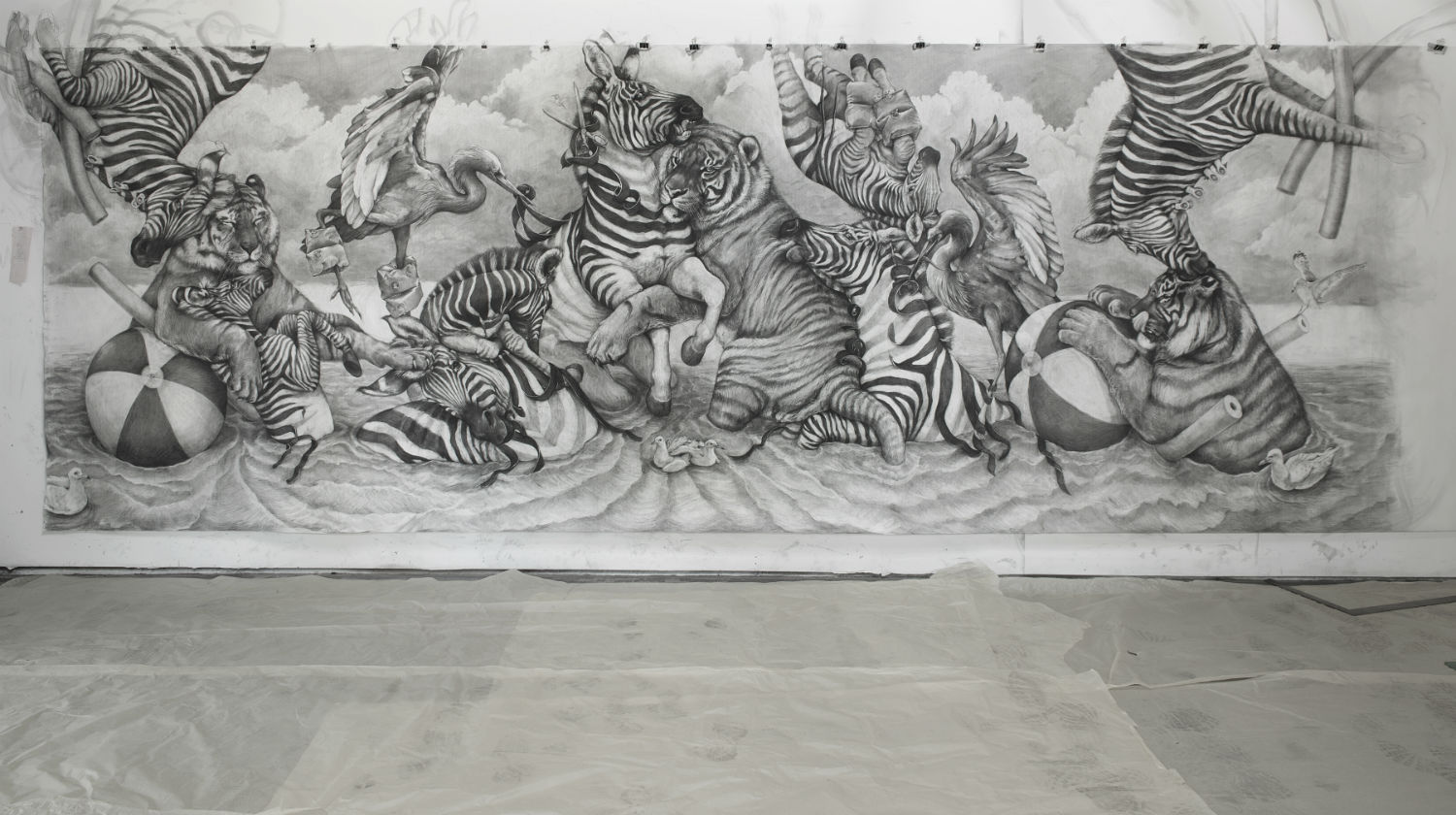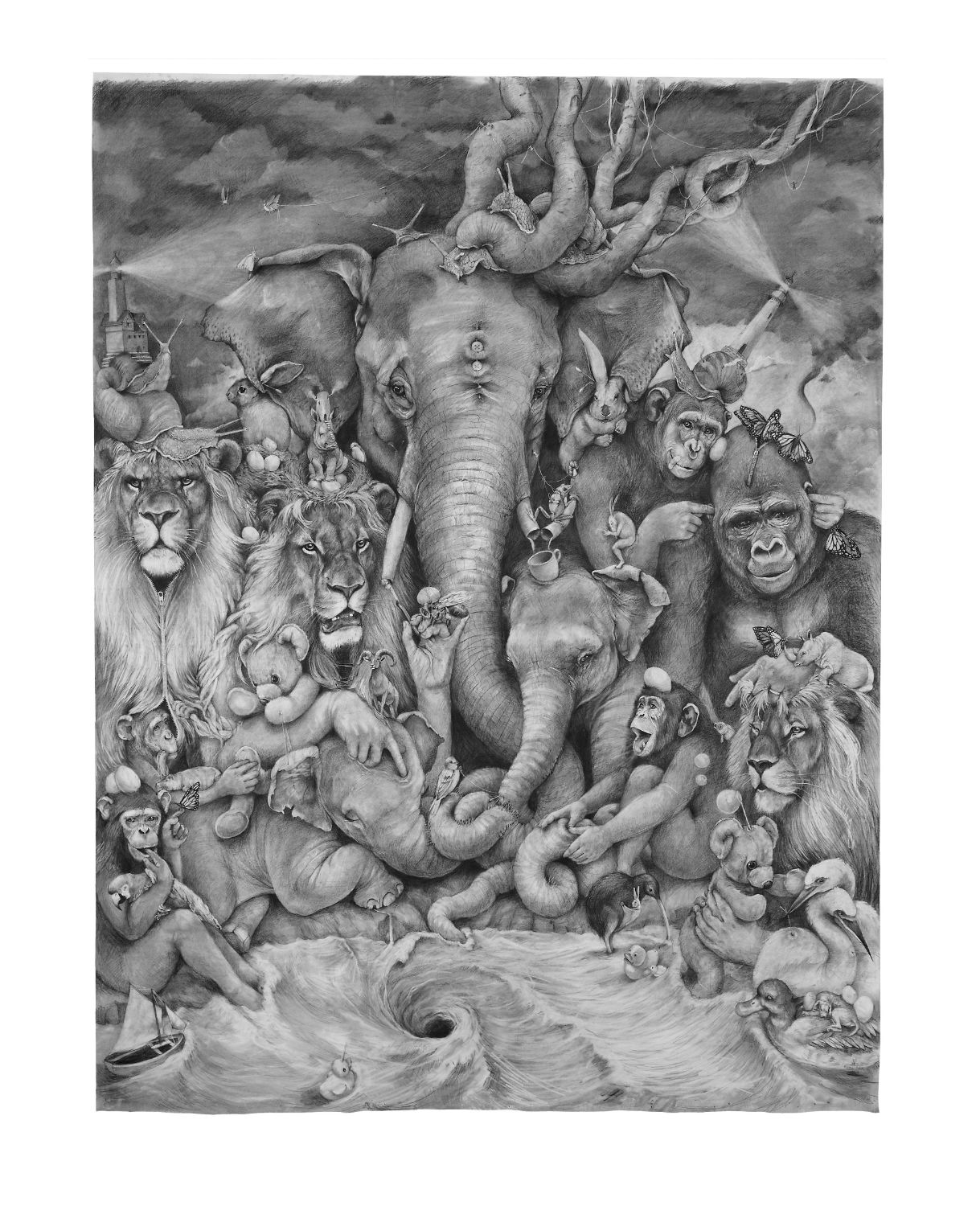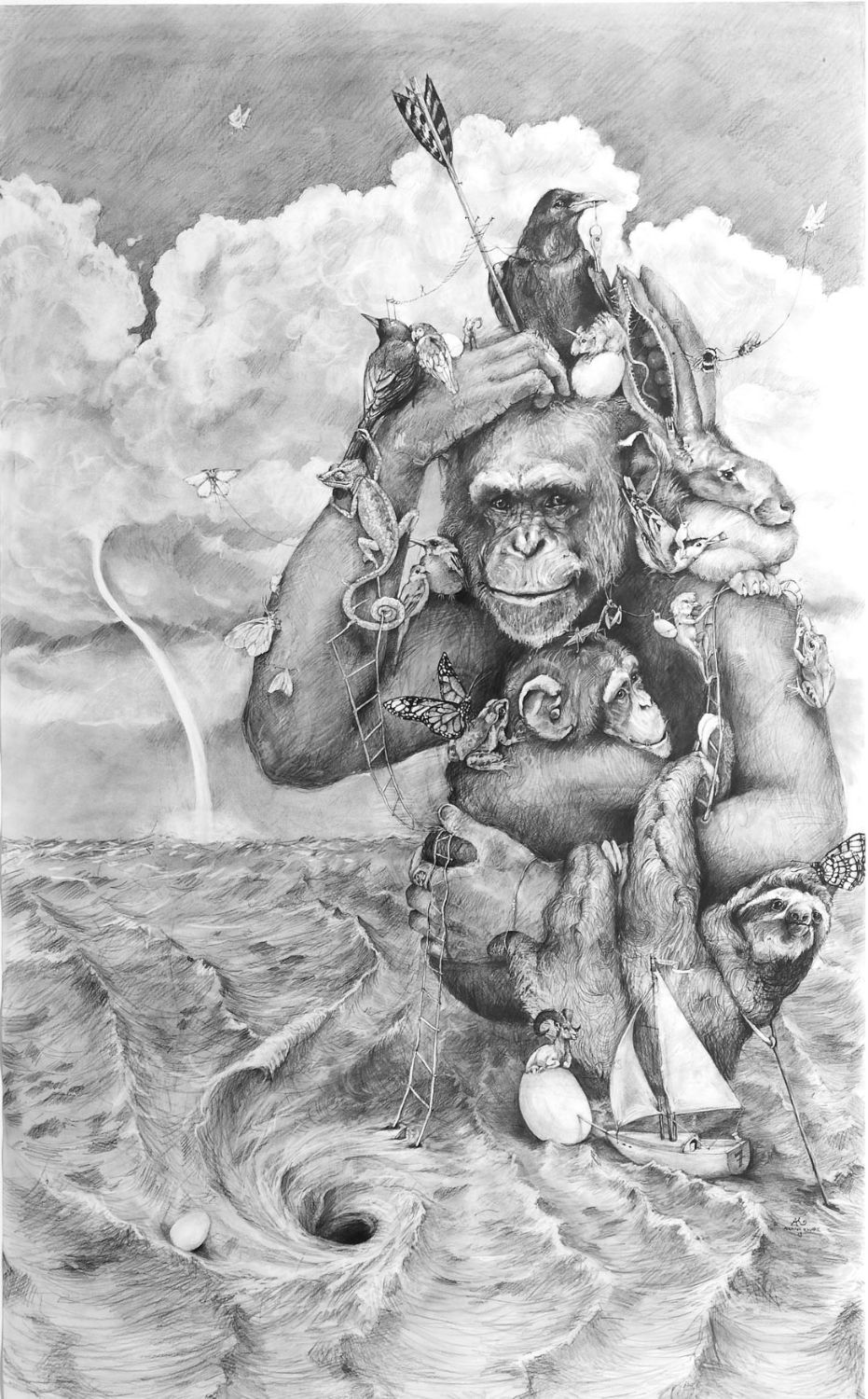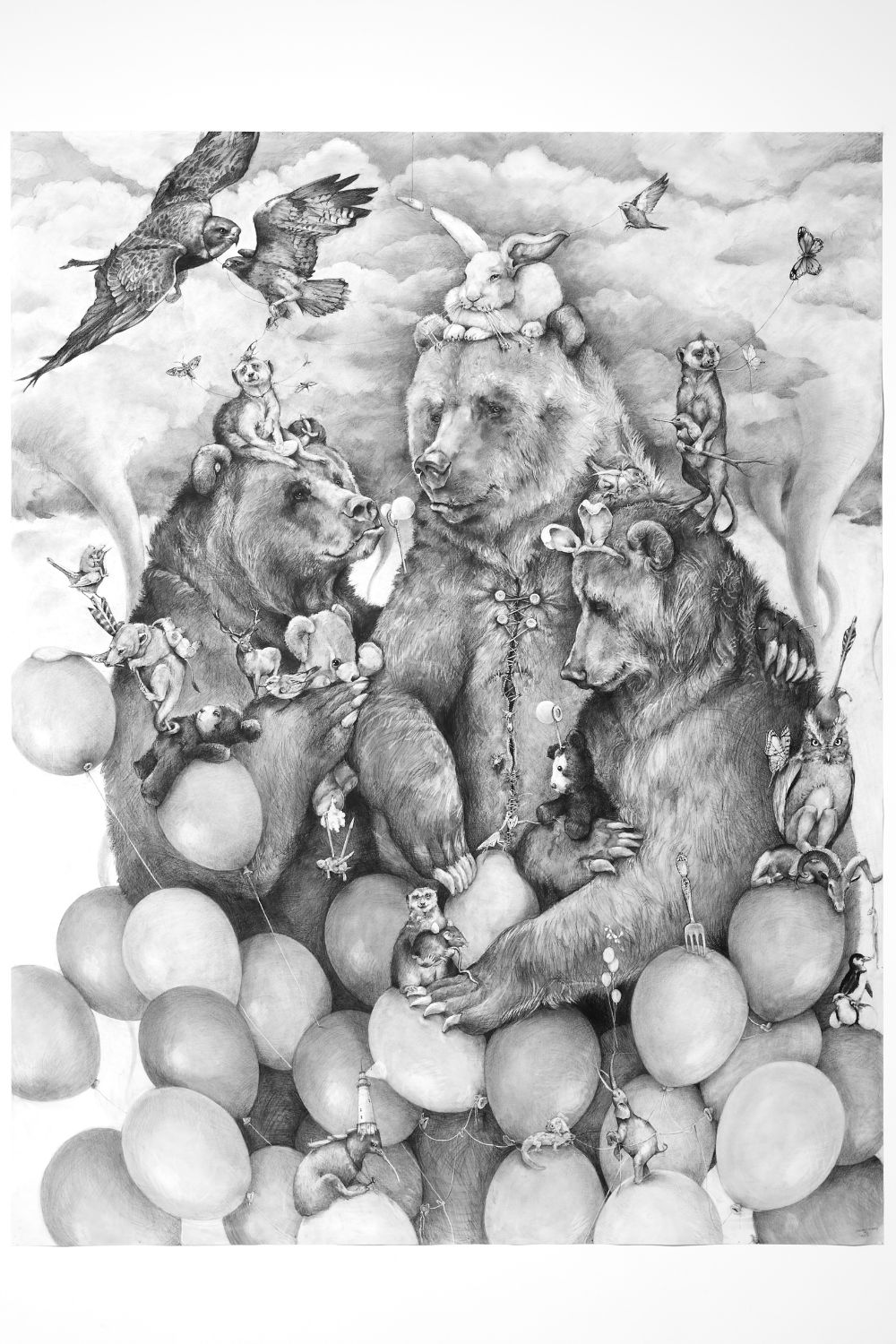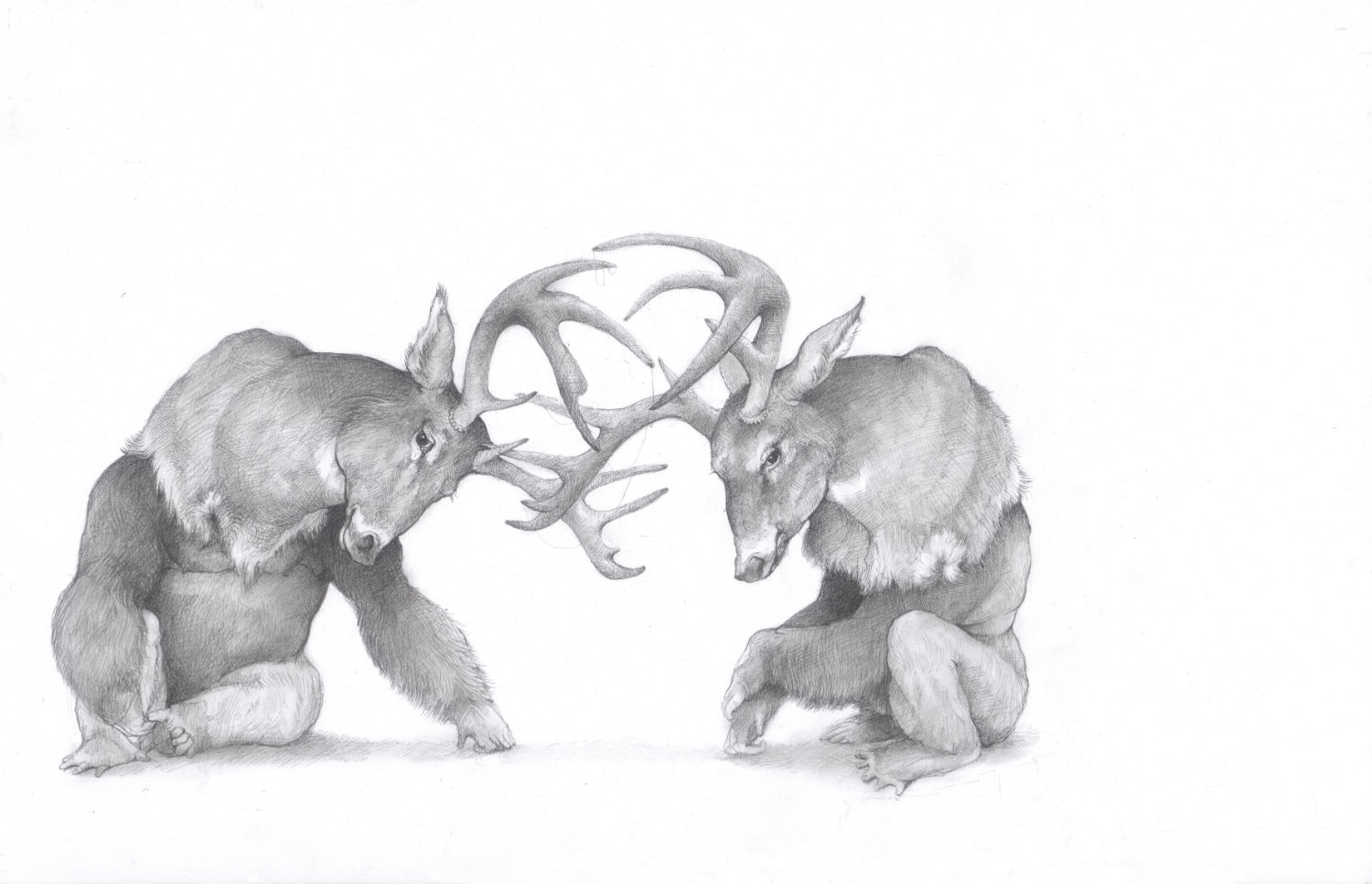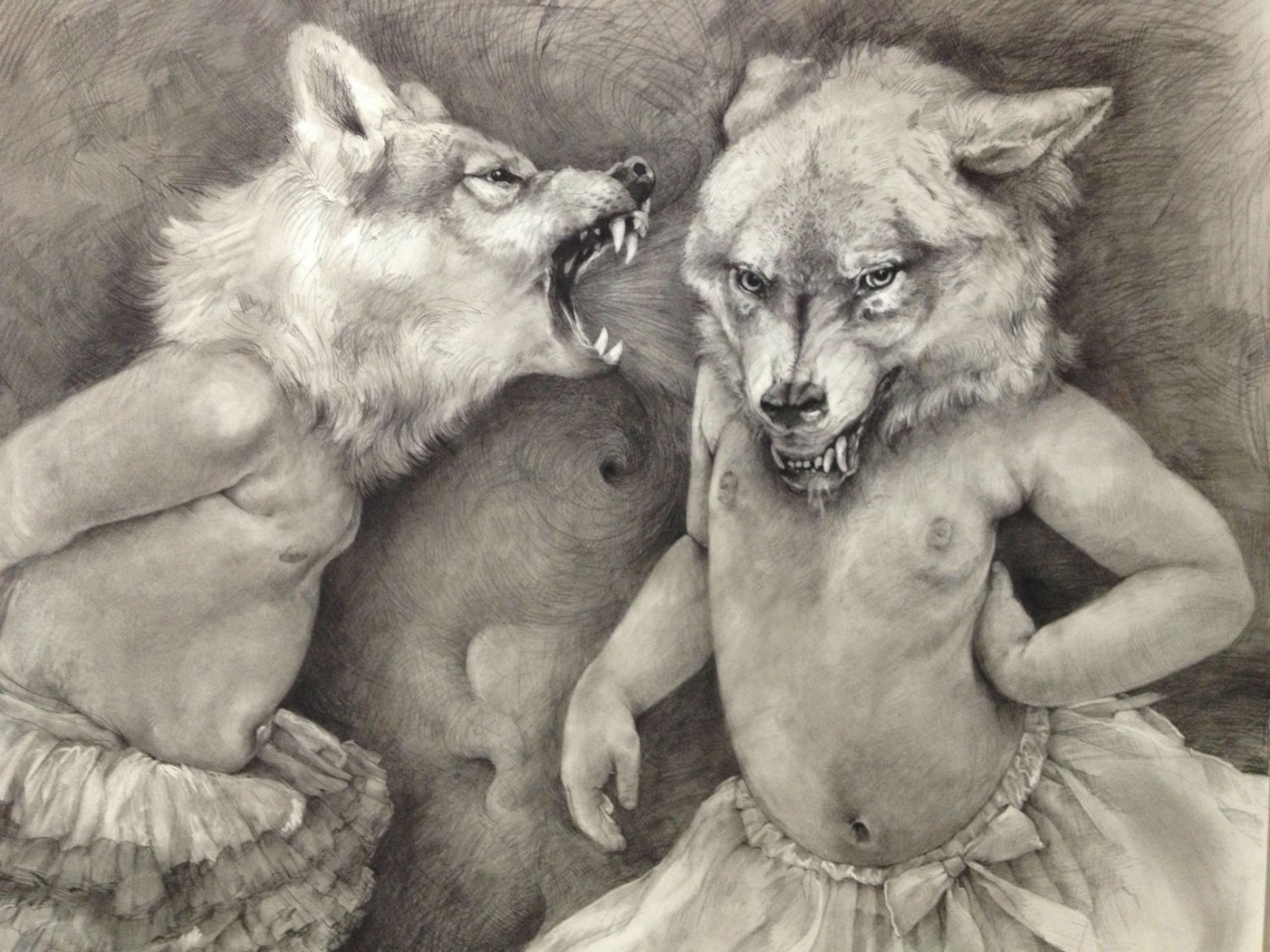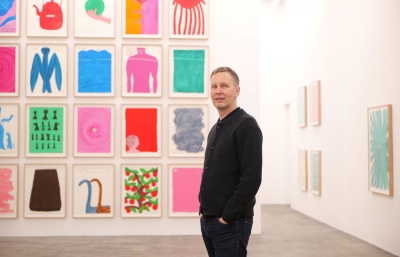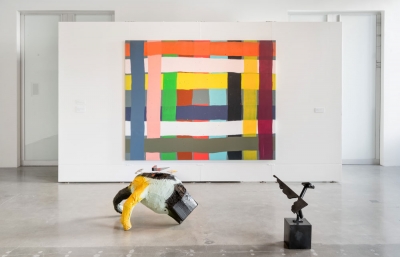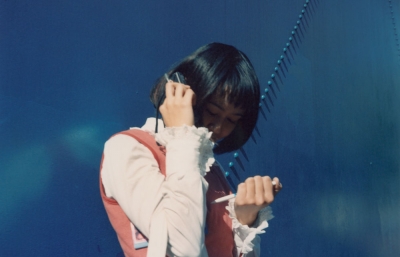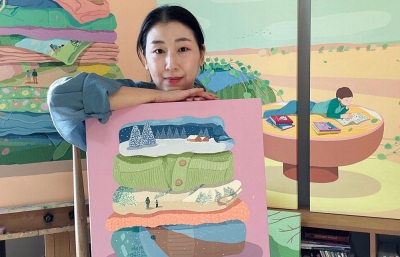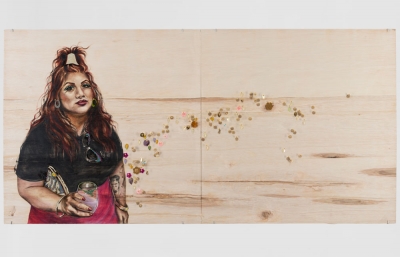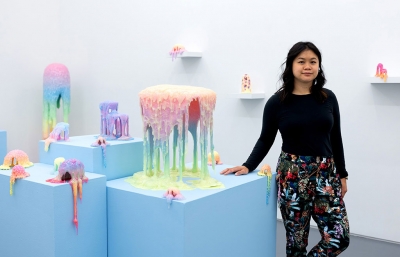Let’s get it over with: yes, in 2012, Adonna Khare won a $200,000 art prize, jointly awarded by a jury of experts, as well as the public—almost 413,000 voters—in the heartlands of Grand Rapids, Michigan. This community support befits an artist whose purpose is driven by impact: “My hope that someone is affected by it and makes a change, even a small one.”
Studies show that limited childhood exposure to nature influences the degree to which young people support efforts to protect the environment, so it appears that Khare is putting her winnings to good use. Her penciled portrayals of animals are not cute or precious but respectfully rendered, the many fine strokes delineating detail and depth. Whether interacting or simply projecting a unique place in our world, her animals are studies in themselves and our own modern allegories, Adonna’s Fables.
Gwynned Vitello: What are your memories of picture books growing up, and did any have a strong influence?
Adonna Khare: I don’t remember any specific book, but was drawn to anything that had photo references of different species of plants and animals. I was fascinated with how many different types of birds, cats or primates there were and kept looking over and over at the differences between them, wondering how this could be. Especially interesting were the subtle differences, particularly how they adapted to their environment. I guess I was, and still am, a giant animal nerd.
Aside from reading to your daughter, are there current genres or authors that provide special inspiration?
I love the authors who can create a world of endless possibility, and particularly fantasy. I suppose it comes as no surprise, but I love to let my mind wander, taking my imagination wherever it may go.
I guess it’s not too much of a stretch to assume that you spent a lot of time outdoors growing up—and that you still do?
My Mom always encouraged us to explore. In her youth, she was part of an Alpiners group, spelunking and rock climbing all over the United States. So all we did as kids was spend time outside in rural Iowa. When we moved to California, open space was hard to find, so I used my imagination to create my own expanses. In college, I joined a wilderness group. We’d live on the rocks in the Utah desert or build snow shelters in Mammoth.
When did you start drawing, and what did you draw?
I drew as far back as I can remember. Looking back, I guess I drew what I understood. Animals always made sense to me. So, other than the occasional family portrait, I would draw wildlife. As I got older, I’d take pieces of animal sketches, move and combine them, and then place them in different environments.
When did you decide to go to art school, and how did you choose Cal State at Long Beach? Did you study anatomy?
Originally, I was going for a degree in Biology with the thought of also studying Zoology. My parents intervened and encouraged me to pursue art. As I got further into the art program, my favorite classes were life drawing and painting. I was, and still am, fascinated with anatomy.

Winning a $200,000 art prize isn’t part of typical creative trajectory. Tell us how you how decided to enter the contest, and why you think you were chosen.
Following the birth of my daughter in 2009, my art career was essentially at a standstill. After she was born, I began to face the frightening realization that I wasn’t going to be an artist. Not being able to get placed as a professor, I began work as an elementary school art teacher. As the 2011-2012 session began, it became clear that there was not going to be employment at the end of the school year there either. So I entered what was essentially a moonshot. I spent over a year working on the elephants piece, every bit of me poured into it.
When I got to the competition and the show began, a real connection with the viewers started to occur. The things that I thought only I could see in the drawing were resonating with them as well. I would spend eight hours a day over the course of two weeks laughing, reminiscing and crying with hundreds of people. I think it was the truthfulness in the drawing, the themes we can all connect to, from the birth of my daughter, to the diagnosis of my nephew with Type 1 Diabetes. This is all to say it’s been an amazing few years, with opportunities I never thought I would have.
Why animals more than the landscape?
The animals are more of a language for me, my chosen vessels for telling stories, each drawing like a chapter out of my life. They are also a way to allow the viewer to associate their own experiences.
Have you always had a preference for paper drawings? Describe how carbon pencil became your favorite method.
Growing up, we always had pencils and paper around, and not a lot of paint. I’ve always enjoyed the immediacy of mark-making and the quality of paper. For me, paper is unlimited potential. Carbon pencil represents the perfect medium between charcoal and graphite. It allows me to have the dark, tonal qualities of charcoal and, at the same time, get the line quality from graphite without the shine.
You’re not alone in favoring large pieces. Do you think it’s coincidental that many artists are going bigger and bigger?
The reason I like to draw large is to engulf the viewer in the environment. I want to transport the audience and let their imaginations run wild. Working in a small studio with a 12-foot wall, I thought 36 feet was enormous. Now I have a larger studio and I’d love the opportunity to transform an entire room, space or building.
What animal do you know will always be part of your repertoire, and is there one you just haven’t been able to “capture?” Has your daughter made any requests?
Elephants will always be an element. For me, they represent, family, strength and connection. Also, they represent the fragility of life and how quickly something we love can disappear, and their story parallels what is happening to wildlife due to poaching and destruction of habitat. I am still having a hard time drawing very emotional subjects, like The Screaming Bear, which is related to my father. I’m struggling to revisit some of these subjects to further describe the loss. My daughter always likes me to draw anything that’s roaring, screaming or baring its teeth. It’s a lot like her personality.
----
Originally published in the March, 2016 issue of Juxtapoz, available here.
Adonna Khare is also featured in our new book, Juxtapoz Wild.

